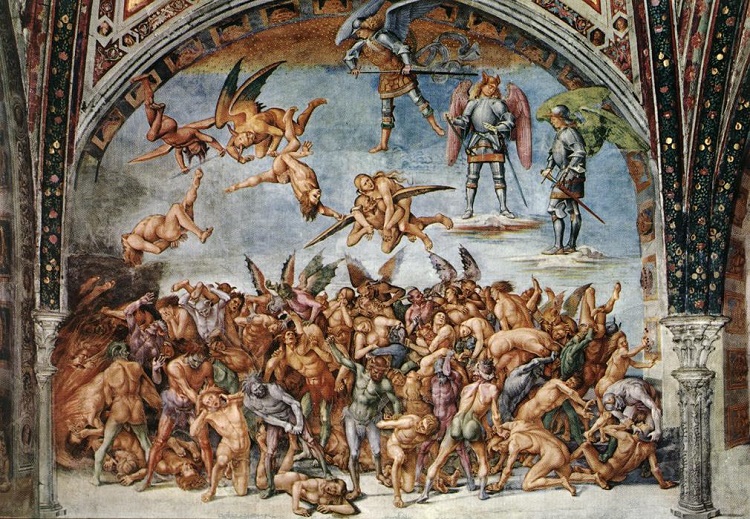The pictorial decoration Signorelli executed in Orvieto Cathedral places him among the greatest painters of the Italian Renaissance. The artist was called to Orvieto in 1449 to decorate the Cappella Nova later called the Chapel of San Brizio, sublimely articulating a well-known theme, the Last Judgment.
The pictorial cycle is distributed over three registers: on the vaults of the two bays Signorelli completes the decoration begun by Beato Angelico and soon abandoned by him. The lower register depicts the scenes of the Last Judgment: the Inferno, the Preaching and the facts of the Antichrist, the end of the world, the Resurrection of the flesh, and the Paradise distributed along the walls. From a corner of the wall narrating the Facts of the Antichrist two figures dressed in black, traditionally identified as Beato Angelico and Luca Signorelli, observe the scenes. In the lower register, Signorelli composes a veritable iconographic cycle dedicated to Illustrious Men whose portraits are surrounded by small grisaille scenes illustrating excerpts from their works.
Signorelli’s masterpiece was seen by such greats as Leonardo da Vinci and Michelangelo Buonarroti, who made a stop in Orvieto to visit the Cappella Nova while admiring the anatomy of the nudes painted by Signorelli.
A curiosity: Freud also stopped to admire Signorelli's masterpiece in Orvieto. A visit that inspired him to study the psychic mechanism of forgetfulness. We recommend reading it. Lo you will find it in the first short chapter of the essay 'Psychology of Everyday Life'.
Visitors to the Museo dell’Opera del Duomo can admire the panel painting of St. Mary Magdalene painted by the Master in 1504.
































